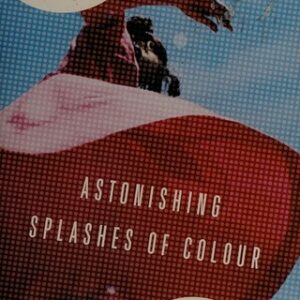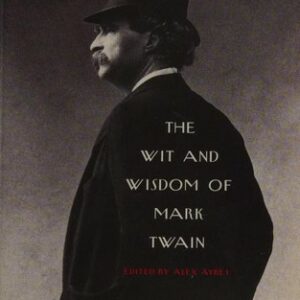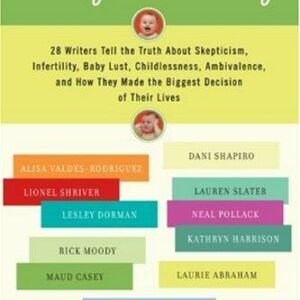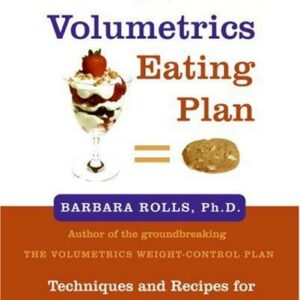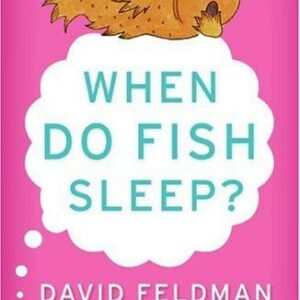Subtotal: $29.00
The Stone Diaries
$18.00
| Title | Range | Discount |
|---|---|---|
| Trade Discount | 5 + | 25% |
- Description
- Additional information
Description
Description
In celebration of the fifteenth anniversary of its original publication, Carol Shields’s Pulitzer Prize-winning novel is now available in a Penguin Classics Deluxe Edition
One of the most successful and acclaimed novels of our time, this fictionalized autobiography of Daisy Goodwill Flett is a subtle but affecting portrait of an everywoman reflecting on an unconventional life. What transforms this seemingly ordinary tale is the richness of Daisy’s vividly described inner life–from her earliest memories of her adoptive mother to her awareness of impending death.
For more than seventy years, Penguin has been the leading publisher of classic literature in the English-speaking world. With more than 1,700 titles, Penguin Classics represents a global bookshelf of the best works throughout history and across genres and disciplines. Readers trust the series to provide authoritative texts enhanced by introductions and notes by distinguished scholars and contemporary authors, as well as up-to-date translations by award-winning translators.Winner of the Pulitzer Prize for FictionCarol Shields (1935-2003) is the author of The Stone Diaries, which won the 1995 Pulitzer Prize for fiction, the National Book Critics Circle Award, and Canada’s Governor General’s Award. Her other novels and short-story collections include The Republic of Love, Happenstance, Swann, The Orange Fish, Various Miracles, The Box Garden, and Small Ceremonies (all available from Penguin).
Penelope Lively grew up in Egypt but settled in England after the war and took a degree in history at St Anne’s College, Oxford. She is a Fellow of the Royal Society of Literature, and a member of PEN and the Society of Authors. She was married to the late Professor Jack Lively, has a daughter, a son and four grandchildren, and lives in Oxfordshire and London.
Penelope Lively is the author of many prize-winning novels and short story collections for both adults and children. She has twice been shortlisted for the Booker Prize; once in 1977 for her first novel, The Road to Lichfield, and again in 1984 for According to Mark. She later won the 1987 Booker Prize for her highly acclaimed novel Moon Tiger. Her novels include Passing On, shortlisted for the 1989 Sunday Express Book of the Year Award, City of the Mind, Cleopatra’s Sister and Heat Wave.
Penelope Lively has also written radio and television scripts and has acted as presenter for a BBC Radio 4 program on children’s literature. She is a popular writer for children and has won both the Carnegie Medal and the Whitbread Award.
INTRODUCTION
“A kind of family album made into a work of art” —New York Newsday
From her calamitous birth in Manitoba in 1905 to her journey with her father to Indiana, throughout her years as a wife, mother, and widow, Daisy Stone Goodwill struggled to understand her place in her own life. Now, in old age, Daisy attempts to tell her life story through a novel. She listens, she observes, and, through sheer force of imagination, she becomes a witness of her own life: her birth, her death, and the troubling misconnections she discovers in between.
“She enlarges on the available material, extends, shrinks, reshapes what’s offered; this mixed potion is her life. She swirls it one way or the other, depending on—who knows what it depends on?the fulcrum of desire, or of necessity. She might drop in a ripe plum from a library book she’s reading or something out of a soap opera or a dream.”
The life in question belongs to Daisy Goodwill Flett, “a middle-class woman, a woman of moderate intelligence and medium-sized ego and average good luck.” In other words, a woman so commonplace that her story would seem barely worth remarking, were it not, perhaps, for her own determination to tell it. And in telling it, give it shape and meaning—even if she must supply these herself.
This is the problem that Carol Shields addresses in The Stone Diaries: how do small lives, the kind most women were once assumed to lead, assume significance and coherence? How closely do our versions of those lives correspond to objective facts? Can facts be said to exist at all in the context of something as changeable and arbitrary as a life? To what extent do “our” stories really belong to us, considering the tendency that other people—parents, spouses, children—have to intrude in them, interpret them, claim them?
The Stone Diaries approaches these problems with seductive prose, a serene wit and an artfulness that is all the more dazzling given the novel’s apparent insistence on the ordinary. Indeed, one of Shields’ conceits has been to disguise her fiction as a “real” biography, complete with period photographs and a family tree. But beneath the scrupulous—if spurious—documentation and bland rural and suburban settings lie incidents as fantastic as the inventions of Gabriel García Márquez: a hugely fat woman dies in childbirth without ever realizing that she was pregnant; a dour Orkneyman journeys back to the island he left decades before, severing ties, jettisoning possessions, and living on to the age of 115 (with the uncanny ability to recite Jane Eyre from memory); a young husband falls to his death ten days after his wedding, possibly as the result of an unexpected sneeze, and his wife, who did the sneezing, never mentions her marriage and its grotesque ending to another soul. Strangest of all, the heroine of this novel passes through her life without ever fully occupying it—an absence that this beautiful and haunting book attempts to redeem.
ABOUT CAROL SHIELDS
The youngest of three children, Carol Shields was born in Oak Park, Illinois in 1935. She studied at Hanover College, the University of Exeter in England, and the University of Ottawa, where she received an M.A. In 1957 she married Donald Hugh Shields, a professor of Civil Engineering, and moved to Canada. She has lived there ever since. In addition to raising five children, all of whom are now grown, Shields has worked as an editorial assistant for the journal Canadian Slavonic Papers and as a professor at the University of Ottawa, the University of British Columbia, and the University of Manitoba, where she has taught for the last fifteen years. She lives in Winnipeg.
Shields is the author of several novels and short-story collections, including The Orange Fish, Swann, Various Miracles,Happenstance, and The Republic of Love. Her books have won a Canada Council Major Award, two National Magazine Awards, the Canadian Author’s Award, and a CBC short story award. The Stone Diaries was nominated for the National Book Critics Circle Award and the 1993 Booker Prize, and won Canada’s Governor General Award. It was also named one of the best books of the year by Publishers Weekly and a Notable Book by The New York Times Book Review.
Related Titles
Various Miracles
In this collection of stories, Shields illuminates the moments when ordinary people face extraordinary circumstances–wild coincidences, declarations of love, startling revelations. We are drawn, too, into a world of sharply observed characters: a comedy writer whose wife is dying, a couple who still gets Christmas cards from a man they assisted twenty-five years ago, an aging woman cutting the grass.
0-14-011837-3
Autobiography of an Invisible Woman
Happenstance
Two dazzling companion novels, printed in one back-to-back book, tell the stories of Jack and Brenda Bowman, who for nearly the first time in their long marriage, spend a week apart. “Carol Shields is a name to set beside Margaret Atwood and Alice Munro”—Anita Brookner
0-14-017951-8
The Orange Fish
These twelve stories exhibit Shields’s extraordinary ability to find both meaning and mystery in the chaos of ordinary life. “Infused with a sly humor, these poignant stories revel in the ordinary, with a few side trips towards the sublime.”—The Washington Post Book World
0-14-015282-2
The Republic of Love
Fay, a student of mermaids who finds it difficult to make a commitment, and Tom, a radio talk-show host who commits all too easily to the wrong women, have each given up on romance…until they meet each other. But when reality intrudes they discover that taking up residence in the republic of love requires more than a touch of luck and a lightning bolt of love. “I envy those with The Republic of Love still ahead of them.”—The New York Times Book Review
0-14-014990-2
Swann
After her brutal murder, all traces of the existence of Mary Swann, rural Canadian poet, begin to vanish. As her characters try to solve the puzzle of Swann’s disappearing legacy, Carol Shields explores the larger mysteries of the nature of art, as well as the powerful forces that motivate all of us. “One of the best novels I have read this year…deft, funny, poignant, surprising, and beautifully shaped.”—Margaret Atwood
0-14-013429-8
AN INTERVIEW WITH CAROL SHIELDS
What were you trying to accomplish in The Stone Diaries? It seems to be the autobiography of a woman who wasn’t there.
I was interested in the notion of autobiography and, in particular, the idea of women’s life stories. A lot of women are erased from their lives, sometimes as a result of their own actions and attitudes, but mostly for societal reasons. The saddest thing about women like Daisy Goodwill is that they didn’t know what was owed them. They didn’t have the words to say “I want.” Ninety-nine percent of the women of Daisy’s generation never claimed their own lives. Only a few women did–and we have novels about them.
Although it purports to be the autobiography of Daisy Goodwill Flett, The Stone Diaries includes the stories of many other characters as well, and occasionally presents information that Daisy is unlikely to know.
I wanted to have a lot of other voices filtering in and out, representing Daisy’s fantasies of what other people imagined about her. We all wonder how other people see us, and Daisy is no exception. I also wanted to include legend along with facts. The birth scene, for example. Daisy wouldn’t remember her own birth, but doubtless she heard stories about it, remarkable as it was, just as I used to hear stories about my birth when I was a child. I remember my mother would always say, “You slipped out just like a lump of butter!” [Laughter]
Is The Stone Diariesmeant to represent Daisy’s real life? To fill in the gaps that the people around her missed?
Well, you know we all carry around in our heads what we think is our life story. When I read back over my manuscript, I saw that Daisy had somehow leaped over her experiences with childbirth, sexual initiation, and education. But that’s how life stories are. It’s as though you end up your life with a boxful of snapshots. They may not be the best ones, but they’re the ones you have. All the other pictures are in an album somewhere.
Speaking of pictures, what about your novel’s photo section? It’s a highly unorthodox touch that further pushes the envelope between fiction and autobiography. How did you come up with it?
When I read real biographies, I always turn to the photos in the middle. I’m always checking the image against the text. I found the photo of the Ladies Rhythm and Movement Club at a small country museum here in Manitoba. The photos of Daisy’s grandchildren are actually of my own children. I asked them for permission, of course.
The idea of a woman being erased from her own life seems almost unbearably sad, but The Stone Diaries doesn’t read like a sad book.
One of the things that redeems Daisy’s life is her friendships with other women. Lifelong friends like Beans and Fraidy, along with the bridge club companions of her later years. Sometimes I think that those “bridge club biddies” were forerunners of consciousness-raising groups. They were early feminist cells.
In one interview you’re quoted as having an interest in “subversive fiction.” Is The Stone Diaries a subversive novel? In what way?
I love writing novels because the novel is such an accommodating form. You can do such a lot within one. I suppose a contemporary novel isn’t supposed to rely too heavily on coincidence and synchronicity, but The Stone Diaries is filled with coincidences. So are most people’s lives. I like to collect stories of other people’s coincidences because I suspect that that’s how the universe really works. Everything I’ve read about chaos theory bears this out. For a while I was worried because The Stone Diaries didn’t seem to have a plot. And then I read an interview with Patrick White—I love Patrick White—in which he says, “I never worry about plot. I worry about life going on toward death.”
What are you working on presently?
I’m writing a novel about work. I love the idea of work, the things people actually do for a living, and I’ve always been struck by the fact that in most novels people aren’t working. I’d like to look at that.
DISCUSSION QUESTIONS
Table of Contents
Title Page
Copyright Page
Dedication
Introduction
CHAPTER ONE
CHAPTER TWO
CHAPTER THREE
CHAPTER FOUR
CHAPTER FIVE
CHAPTER SIX
CHAPTER SEVEN
CHAPTER EIGHT
CHAPTER NINE
CHAPTER TEN
PENGUIN CLASSICS DELUXE EDITION
THE STONE DIARIES
CAROL SHIELDS (1935-2000) is the author of Dressing Up for the Carnival; Larry’s Party, which won the Orange Prize; and The Stone Diaries, which won the 1995 Pulitzer Prize for Fiction and the National Book Critics Circle Award. Her other novels and short story collections include The Republic of Love, Happenstance, Swann, The Orange Fish, Various Miracles, The Box Garden, and Small Ceremonies.
PENELOPE LIVELY is the author of numerous award-winning novels, including The Photograph, Consequences, and the Booker Prize-winning Moon Tiger. She lives in London.
PENGUIN BOOKS
Published by the Penguin Group
Penguin Group (USA) Inc., 375 Hudson Street, New York, New York 10014, U.S.A.
Penguin Group (Canada), 90 Eglinton Avenue East, Suite 700, Toronto,
Ontario, Canada M4P 2Y3 (a division of Pearson Penguin Canada Inc.)
Penguin Books Ltd, 80 Strand, London WC2R 0RL, England
Penguin Ireland, 25 St Stephen’s Green, Dublin 2, Ireland (a division of Penguin Books Ltd)
Penguin Group (Australia), 250 Camberwell Road, Camberwell,
Victoria 3124, Australia (a division of Pearson Australia Group Pty Ltd)
Penguin Books India Pvt Ltd, 11 Community Centre, Panchsheel Park, New Delhi—110 017, India
Penguin Group (NZ), 67 Apollo Drive, Rosedale, North Shore 0632,
New Zealand (a division of Pearson New Zealand Ltd)
Penguin Books (South Africa) (Pty) Ltd, 24 Sturdee Avenue,
Rosebank, Johannesburg 2196, South Africa
Penguin Books Ltd, Registered Offices:
80 Strand, London WC2R 0RL, England
First published in Great Britain by Fourth Estate Limited 1993
First published in the United States of America by Viking Penguin,
a division of Penguin Books USA Inc. 1994
Published in Penguin Books 1995
This edition with an introduction by Penelope Lively published 2008
Copyright © Carol Shields, 1993
Introduction copyright © Penelope Lively, 2008 All rights reserved
Publisher’s Note This is a work of fiction. Names, characters, places, and incidents either are the product of the author’s imagination or are used fictitiously, and any resemblance to actual persons, living or dead, business establishments, events, or locales is entirely coincidental.
LIBRARY OF CONGRESS CATALOGING IN PUBLICATION DATA
Shields, Carol.
The stone diaries Carol Shields ; introduction by Penelope Lively.
p. cm.—(Penguin classics deluxe edition)
eISBN : 978-0-143-10550-3
1. Women—Fiction. I. Title.
PR9199.3.S514S76 2008
813’.54—dc22 2008028398
The scanning, uploading and distribution of this book via the Internet or via any other means without the permission of the publisher is illegal and punishable by law. Please purchase only authorized electronic editions, and do not participate in or encourage electronic piracy of copyrighted materials. Your support of the author’s rights is appreciated.
For my sister,
Babs
A number of people have read the manuscript for this book and offered encouragement and suggestions. I thank Blanche Howard, Joan Clark, Jim Keller, Anne Giardini, Catherine, Meg and Sara Shields, and, especially, Miss Louise Wyatt of London, Ontario.
nothing she did
or said
was quite
what she meant
but still her life
could be called a monument
shaped in a slant
of available light
and set to the movement
of possible music
(From ‟The Grandmother Cycle” by Judith Downing, Converse Quarterly, Autumn)
INTRODUCTION
The best fiction surprises—and withholds. Each time that I read The Stone Diaries I see it differently. It is a story, first of all—the story of a woman, Daisy Goodwill, later Daisy Goodwill Flett. It is also many stories—those of her family and her friends. You read it first as such, drawn in at once by the compelling opening pages, and then keen to know what is going to happen—to Daisy, to the rest of them. Subsequently it becomes a view of how one woman—many women—lived in the twentieth century, what they expected and what was expected of them. It can be seen as a discussion of the nature of evidence—the way in which there is no single truth about anyone’s life, but as many truths as there are observers. And if you are interested in how a novel is made, it turns into an exercise in narrative technique. And, perhaps, airily—a demonstration of how a novelist can successfully juggle a cast of twenty characters and more over time and space without bewildering the reader.
Here is a story that opens in Manitoba in 1905 and ends in Florida in the 1990s. From birth to death—the parabola of a life, a North American life, with brief excursions to France, to Orkney. Daisy is born into a world that has known neither of the world wars, and in which a woman is required to be first and foremost a domestic support system. She leaves another one in which the globe has contracted and women expect to work outside the home. Her father-in-law sails the Atlantic as a young immigrant from Orkney: At the end of the century Daisy will fly the ocean to trace him. She has experienced the century in a temporal sense, but, as we learn in one of the novel’s deft commentaries, she has never known nude bathing, pierced ears, body massage, and much else that could be seen to characterize the age. Born in ‟the murderously hot back kitchen” of a Manitoba stone-worker’s home, she will spend her last years in a three-bedroom Florida condo, a Florida bluehead in a turquoise pantsuit.
Kitchens are rich with significance in the novel—kitchens and what is done in them. The vivid opening chapter has the kitchen as the scene of both birth and death, with the Malvern pudding that Daisy’s mother, Mercy, is cooking as an emblem of domestic labor and achievement—the thickly cut bread, the oozing fruit juices, the sugar. Many years later, Daisy prepares supper for her family—husband, three children—in an Ottawa kitchen (summer heat once more, so a cold meal): jellied veal loaf, sliced tomatoes, potato salad, raspberries again, but in little glass bowls. There is care and attention: the formality of a tablecloth, and before her husband’s return from work Daisy ‟fixes” herself—housedress off, fresh clothes, earrings, lipstick. We are told that Daisy desires—deeply, fervently, sincerely—to be a good wife and mother. She is an assiduous reader of women’s magazines, in support of this ambition. In one of the novel’s many significant asides—how others see Daisy—we are given the possible contrasting reactions of a visiting friend of her girlhood, Fraidy Hoyt, herself unmarried and childless. She is perhaps grimly envious—of the distinguished husband, the big house, the beautiful children; or, is she pityingly contemptuous of this woman drowning in domesticity, child-ridden, who probably hasn’t read a book in ten years? Teasingly, we are not told which view Fraidy holds, but this is 1947, and it is tempting to see Fraidy as the voice of the future, ahead of her day, already with the assumptions of the post-feminist woman.
Throughout the novel, the authorial voice alternates with those other voices, creating a deliberate ambiguity. We know what happens to Daisy, and frequently she speaks for herself, but we see her also as others see her, and no two people see her in the same way. Was she happy as a domestic goddess? Maybe not, for in the next, and crucial section of the book—significantly called ‟Work, 1955-1964”—she is shown, entirely obliquely, through a sequence of letters written by others, as immersed in a new role as Mrs. Green Thumb, gardening correspondent for the local paper, and eventually devastated and plunged into a lengthy episode of depression when she gets the sack. So was domestic life not work? This section is one of the most powerful in the novel—clever and funny—and it gives much pause for thought, as we see Daisy’s life of that time shimmer behind the words of other people, and it becomes clear that this is the point at which Daisy has achieved some kind of fulfillment and discovers in herself a capacity of which she had been unaware. She strove to be a good wife and mother, but was she in fact stifled by that role?
The whole novel is a cunning tapestry of evidence. Any novelist is of course in the happy position of being omniscient—of knowing everything about everybody, and deciding just how much information to release to the reader. The Stone Diaries is a virtuoso discussion of the nature of evidence itself, of the ways in which it is unreliable and conflicting. In a revealing sequence, we are given a whole slew of opinions about Daisy—those of her children, of her cousin, of Fraidy Hoyt once more. Fraidy believes her to have suffered from sexual starvation—citing her own fifty-four lovers as though this were a more normal record. Her cousin thinks the children drained her. Her daughter Alice sees her—from the viewpoint of a young woman of the 1960s—as without self-esteem in her domestic days: ‟She functioned like a kind of slave in our society.” This analysis is taking place during Daisy’s period of depression after she loses her journalistic job, and as a coda to the alternative views we are given an authorial glimpse into Daisy’s own state of mind: ‟Sleeping inside her like a small burrowing creature is the certainty that she’ll recover.” Nobody else has mentioned resilience, the capacity to survive. Maybe this is the key to Daisy’s personality.
After Daisy’s death these conflicting voices are once again heard, but interwoven now with another kind of evidence—the cool and indisputable facts of her life: the sequence of addresses at which she has lived, the illnesses from which she has suffered, the organizations to which she has belonged, the list of her bridal lingerie at her 1927 wedding. These flat lists are indeed evidence of a kind—a biographer could make good use of them—and they serve as a neat indication of the times in which she has lived, but they are also bland and uninformative without the color of an accompanying voice. They are there to demonstrate that facts alone can be both revealing and uncommunicative.
One of the novel’s most arresting features is the attention to detail, the use of detail to evoke time and place, from the ingredients of the Malvern pudding in that Manitoba kitchen to the account of Daisy’s sparse possessions in the hospital room of her last days: a toothbrush, toothpaste, a comb, a notebook, a ring of keys. . . . Physical objects are made to provide another kind of evidence, to conjure up the backdrop to Daisy’s life, and they are meticulously chosen and placed within the narrative. Detail is made to define a character: Daisy’s husband, Barker Flett, a senior civil servant with an expertise in botany, is devoted to taxonomy, to the ordering of the botanical world, and we are first introduced to him as a young man with a passionate dedication to the western lady’s slipper, genus Cypripedium, on which he is writing his dissertation: ‟Dorsal sepal, column, lateral sepal, sheath, sheathing bract, eye and root.” Somehow, this litany brings Barker Flett more sharply to life than any detached account: We see the way in which he saw things. When we learn what Daisy is wearing as a baby—a tucked nainsook day-slip topped by a plain flannel barrowcoat, which in turn was topped by a buttoned vest in fine white wool, the archaic terms are perfectly evocative of an early twentieth-century infant, and also say something of the person responsible for clothing her. One of the funniest passages in the novel is also one of the most telling, when we hear the bossy, instructing voice of Mrs. Hoad, mother of Daisy’s first husband, lecturing the young bride-to-be: ‟When you set the table, be sure the knife blade is turned in. In. Not out. Salad forks, of course, go outside the dinner fork . . . Grape-nuts are a necessity, also a very economical food . . . I wonder if you have discovered Venitian Velva Liquid for your own skin . . . For bath powder I suggest Poudre de Lilas. Some powders can be overwhelming. Men are offended by strong odors . . .” This torrential discourse not only tells us all we need to know about Mrs. Hoad, but serves also as a window into the lifestyle of the prosperous social circles of Bloomington, Indiana, in 1927. And on top of such set-piece instances of deliberate accuracy there is the occasional gift of a piece of throwaway detail that acts as a kind of marker, a reminder of the basic prompt of the novel; the stone with which Daisy’s young mother weighted her Malvern pudding contained three fused fossils of an extremely rare type. We are, after all, reading The Stone Diaries.
Stone is the foundation of the narrative—the dolomitic limestone quarries of Manitoba in which work both Daisy’s father and the father of her future husband, Barker Flett. In time, Cuyler Goodwill is to become a wealthy public figure, a position dependent upon his initial skill with stone. Magnus Flett will eventually return to his native Orkney, solitary and resigned, alienated from his family and requiring the reassurance of that stony landscape from which he came. There is a sense in which Daisy’s own life has been conditioned by stone—her birth in Manitoba, her subsequent youth in Bloomington, Indiana, to which her father’s skills have taken him and where he is prominent and well-regarded, her eventual marriage to and life with Barker Flett, himself a child of the quarries. The narrative rests upon stone, as it were, but its driving force is work.
Work is too often glossed over in fiction, put aside. The Stone Diaries pays proper attention to work, without ever becoming tedious. Most people’s lives, after all, are dominated by what they do, and here is a fiction which recognizes that fact, and gives it due respect. We are told about people’s working lives, with the greatest economy, from the daily time-table of the Manitoba quarrymen to Barker Flett and his lady’s slippers, and, later in the century, Daisy’s daughter Alice with her rarefied academic studies of Chekhov. And there is also, of course, the central issue of Daisy herself, her brief burst of journalistic employment, and the question of whether or not being a good wife and mother can be called work or not. The Stone Diaries is a novel full of activity, sometimes center-stage (those hot kitchens), sometimes in the background, but very much evident. Everybody is grounded—we know how they have spent their days, whether they are conjured up by the authorial voice or made to speak for themselves.
This matter of voices directs the novel, makes it distinctive and arresting. Carol Shields has used a complex and fascinating series of narrative devices with which to tell the story, from the detached authorial voice to the voices of the various characters, by way of letters, lists, and newspaper entries. It is a bold technique that is here entirely successful. The various shifts in narrative form act as small surprises, keeping the reader intrigued. Sometimes Daisy is allowed to speak for herself; more often, someone else is talking about her, or we hear of her in detachment, as we look over her creator’s shoulder. And then there is the sudden jolt of a letter, or the intervention of a friend or family member. This is a narrative style that lends itself to the most effective kind of economy—Carol Shields can say most by saying least. She never tells us that Alice is a somewhat prickly and difficult woman; we learn this from an aside by Fraidy Hoyt: ‟Alice looked gorgeous—my, she’s mellowed.” And the letter sequence from which we learn about Daisy’s period as Mrs. Green Thumb, and its dismaying conclusion, is wonderfully deft. It covers a handful of pages, where a conventional narrative form probably would have gone on a great deal longer and carried far less punch.
This narrative technique has allowed Carol Shields to escape the straitjacket of a long plod through the years. She can home in on a particular event, a particular period, and bring that to life. She can relay an important piece of information such as the death of Barker Flett, through the content of a solicitor’s letter—far more cogent than a plain statement of what has happened. She can ignore long stretches of time, but loop back to them later, as when we learn of Daisy’s college studies in nineteenth-century Italian history, revealed by her son Warren, who came across a box of old essays in the storeroom of the family home: There is a glimpse of an earlier Daisy and light is perhaps thrown on the frustrations of her later life. And the technique allows for an effective form of distancing, so that we see some events at a slant, from a throwaway comment—that Fraidy Hoyt has been widowed, that Beans (Daisy’s other girlhood friend) has been abandoned by her husband.
But perhaps the most significant effect of this technique is the way in which it can be seen to mirror the processes of memory. Memory is not linear, chronological; neither is it a narrative. Memory is like a series of slides, any of which may flash up at any time, in no particular order, and without links between them. The Stone Diaries respects chronology, it gives us the arc of Daisy’s life from birth to death, but within that structure the contrasting entries—long, short, expansive, terse—seem to mimic the way in which memory also makes a nonsense of time. In the mind, some entire years vanish into a black hole of oblivion, while a few minutes may hang there forever, brilliant with detail and effect. A childhood moment swims up when we have just been remembering an event of last month. A technique that abandons conventional narrative and plays with different voices, different ways of getting information across, seems to echo the contents of the mind, where what is seen, heard, and felt is all jumbled up—a card-index that has lost its indexing system.
But a novel requires system, above all. A novel that genuinely reflected the processes of memory would possibly be interesting and arresting but would also be pretty unreadable. We tolerate our own chaotic memories because we hold the key to the private code. While the structure of The Stone Diaries hints at the operation of memory, it also respects the requirements of fiction, the first of which is to remember the reader. Readers demand coherence; confuse them and you have lost them. An adventurous narrative form is only effective so long as it sweeps the reader along, and The Stone Diaries scores high. In fact, the switches from one voice to another, from detached overview to immediate account, from dialogue to letters, serve to keep the reader involved and expectant. You want to know what will happen next, and what has happened, but you are also drawn in by the presentation—the switches require attention.
The Stone Diaries is a relatively short novel that seems long, an effect created by its structure. A great deal happens to many people within a short space. There is a large cast, but even without the courtesy of the family tree provided it is not hard to keep track of relationships and connections. Characters drop out and can be forgotten until some neat reintroduction, such as the reminder of the Jewish peddler who was one of the group in the Manitoba kitchen on the day of Daisy’s birth—in the words of his grandson, decades later. We discover how that day had been a seminal one for him also. New names appear with each generation, but there is the satisfactory continuity of the people whose lives run parallel to Daisy’s and who make guest appearances throughout the narrative—her girlhood friends Fraidy and Beans.
In all of her fiction, Carol Shields excels at character creation. She conjures up a character in a few lines of dialogue, in a pungent authorial aside. The cast of The Stone Diaries brims with sharply defined characters, whether central figures such as Cuyler Goodwill or Barker Flett, or peripheral figures such as Cuyler’s second wife, Maria, who erupts into the story in a gust of exuberant and incomprehensible Italian. It is this precision about her characters that enables Carol Shields to field such a generous cast; we don’t get confused about people because all are so distinctive.
There is one exception: Daisy herself. This is of course entirely deliberate. We never see Daisy in such sharp relief because our view of her is multifaceted. There is an ambiguity about the perception of Daisy that is a reflection of the ambiguity that hangs over any life; we are all of us some things to some people, something else to others. And because the novel is in one sense a discussion of the nature of evidence, there can be no hard and fast definition of Daisy. As the focus of the story, around whom everything turns, she must be to some degree elusive; the reader’s contribution is invited. How do you see Daisy?
For my own part, I see her differently each time I revisit the novel: Sometimes she dominates and directs, at others she is almost submerged by the claims of others. The essential quality of the best fiction is that it should offer itself afresh at each reading—you find aspects that you had apparently missed before, you home in on some feature that had passed you by. The Stone Diaries is a novel so rich in characters, in events, in sharply evoked settings that it never fails to provide some new angle. If you read it with an eye to the backdrop alone, there is a range that runs from the stone quarries of Manitoba to the flat, bleak, windy landscape of Orkney, by way of prosperous Bloomington and the condominium land of Florida. Sometimes the humor stands out: the discussion of sex between young Daisy and her girlfriends, Mrs. Hoad’s spiel of instruction, the wry message contained in the letters sequence about Mrs. Green Thumb. At others you are struck by the elegance of the writing—that wonderfully accurate dialogue, the apt phrases that shine out on every page. There is no slack anywhere in this novel; it is taut from beginning to end, each paragraph essential, each section springing from its predecessor. I have enjoyed and admired all of Carol Shields’s work, and I believe The Stone Diaries to be her masterpiece.
—Penelope Lively
CHAPTER ONE
Birth, 1905
MY MOTHER’S NAME was Mercy Stone Goodwill. She was only thirty years old when she took sick, a boiling hot day, standing there in her back kitchen, making a Malvern pudding for her husband’s supper. A cookery book lay open on the table: ‟Take some slices of stale bread,” the recipe said, ‟and one pint of currants; half a pint of raspberries; four ounces of sugar; some sweet cream if available.” Of course she’s divided the recipe in half, there being just the two of them, and what with the scarcity of currants, and Cuyler (my father) being a dainty eater. A pick-and-nibble fellow, she calls him, able to take his food or leave it.
It shames her how little the man eats, diddling his spoon around in his dish, perhaps raising his eyes once or twice to send her one of his shy, appreciative glances across the table, but never taking a second helping, just leaving it all for her to finish up—pulling his hand through the air with that dreamy gesture of his that urges her on. And smiling all the while, his daft tender-faced look. What did food mean to a working man like himself? A bother, a distraction, perhaps even a kind of price that had to be paid in order to remain upright and breathing.
Well, it was a different story for her, for my mother. Eating was as close to heaven as my mother ever came. (In our day we have a name for a passion as disordered as hers.)
And almost as heavenly as eating was the making—how she gloried in it! Every last body on this earth has a particular notion of paradise, and this was hers, standing in the murderously hot back kitchen of her own house, concocting and contriving, leaning forward and squinting at the fine print of the cookery book, a clean wooden spoon in hand.
It’s something to see, the way she concentrates, her hot, busy face, the way she thrills to see the dish take form as she pours the stewed fruit into the fancy mold, pressing the thickly cut bread down over the oozing juices, feeling it soften and absorb bit by bit a raspberry redness. Malvern pudding; she loves the words too, and feels them dissolve on her tongue like a sugary wafer, her tongue itself grown waferlike and sweet. Like an artist—years later this form of artistry is perfectly clear to me—she stirs and arranges and draws in her brooding lower lip. Such a dish this will be. A warm sponge soaking up color. (Mrs. Flett next door let her have some currants off her bush; the raspberries she’s found herself along the roadside south of the village, even though it half kills her, a woman of her size walking out in the heat of the day.)
She sprinkles on extra sugar, one spoonful, then another, then takes the spoon to her mouth, the rough crystals that keep her alert. It is three o’clock—a hot July afternoon in the middle of Manitoba, in the middle of the Dominion of Canada. The parlor clock (adamantine finish, gilded feet, a wedding present from her husband’s family, the Goodwills of Stonewall Township) has just struck the hour. Cuyler will be home from the quarry at five sharp; he will have himself a good cheerful wash at the kitchen basin, and by half-past five the two of them will sit down at the table—this very table, only spread with a clean cloth, every second day a clean cloth—and eat their supper. Which for the most part will be a silent meal, both my parents being shy by nature, and each brought up in the belief that conversing and eating are different functions, occupying separate trenches of time. Tonight they will partake of cold corned beef with a spoonful of homemade relish, some dressed potatoes at the side, cups of sweet tea, and then this fine pudding. His eyes will widen; my father, Cuyler Goodwill, aged twenty-eight, two years married, will never in his life have tasted Malvern pudding. (That’s what she’s preparing for—his stunned and mild look of confusion, that tender, grateful male mouth dropping open in surprise. It’s the least she can do, surprise him like this.) She sets a flower-patterned plate carefully on top of the pudding and weights it with a stone.
A cool place, the recipe says: ‟Set the mould in a cool place.” (The book is an old one, printed in England more than thirty years ago, its pages limp, but the author’s tone vigorous and pungent.) Yet where on a day like today is Mercy Goodwill to find a cool place? Even the dark stone floor under the cellar steps where she stores her milk and butter and lard has warmed up, giving off this last fortnight a queer sour smell. The Flett family, next door, has recently purchased a Labrador Ice Chest, zinc-lined, and Mrs. Flett has spoken shyly of this acquisition to Mercy, mentioning its features, its ventilating flues, the shining tin provision shelves, how a block of ice is able to last through two warm days or more.
Some sharp thought, the worry over how to keep the pudding cool, or perhaps envy for the Fletts’ new ice chest, brings on my mother’s first spasm of pain. She gives a little cry. Her eyes pull tight at the corners, as though someone has taken hold of her hair and yanked it upward so that her scalp sings. A witness, had there been a witness present in the little back kitchen, might have feared a fainting spell coming on, even though my mother is not much given to faintness. What she feels is more like a shift in the floor of her chest, rising at first, and then an abrupt drop, a squeezing like an accordion held sideways.
She looks down and observes with wonder how the blue and white stripes of her apron are breaking into colored flakes. Her hands fly straight out in the air, a reflex meant to hold back the crushing pressure, and she steadies herself by settling her shoulders and placing her palms flat on the table, leaning forward and letting go a long, soft whimper. The sound that comes from her lips is formless, loose, a wavy line of bewilderment. (Later, these words, more than any others, will attach themselves to my image of my mother: looseness, bewilderment.) For a heavy woman she perspires little, even during the height of summer, and she takes, if the truth were known, a shy pride in her bodily dryness—only now a broad band of dampness is spreading beneath her apron and down the channel of her back. She breathes rapidly, blinking as the pain wraps a series of heavy bands around her abdomen. Down there, buried in the lapped folds of flesh, she feels herself invaded. A tidal wave, a flood.
All spring she’s been troubled with indigestion. Often in the morning, and then again at night after her young husband has gone to sleep, she’s risen from her bed and dosed herself with Bishop’s Citrate of Magnesia. When she drinks ordinary milk or sweetened tea or sugary lemonade she swallows it down greedily, but Bishop’s cool chalky potion she pours into a china cup and sips with deep, slow concentration, with dignity. She doesn’t know what to think. One day she’s persuaded her liver’s acting up, and the next day her kidneys—she’s only thirty years old, but kidney trouble can start early in life, especially for a woman of my mother’s unorthodox size. Or perhaps the problem stems from constipation. Mrs. Flett next door has suggested this possibility, recommending rhubarb tablets, or else, speaking confidentially, some woman’s trouble. Excessive loss of blood, she tells Mercy, is the cause of discomfort for many young ladies—has Mercy spoken to Dr. Spears? Dr. Spears is known for his sensitivity to women’s complaints; he has a way of squeezing his eyes shut when he phrases his delicate inquiries, of speaking almost poetically of nature’s cycles and balances, of the tide of fertility or the consolation of fruit salts.
No, Mercy has not approached Dr. Spears, she would never speak to Dr. Spears of such a thing, she would speak to no one, not even her husband—especially not her husband. Her monthly blood has appeared only twice in her life, springing out of the soft cushions of her genital flesh, staining her underclothes with its appalling brightness, and mocking the small decencies and duties that steady her life: her needlework, her housekeeping, her skill with a flat iron, her preserves and pickles and fresh linens and the lamp chimneys she polishes every single morning.
The doses of Citrate of Magnesia help hardly at all. Fruit salts only make her suffering worse. Her abdominal walls have continued to cramp and heave all spring, and she’s wondered at times if her inner membranes might burst with the pressure. Bile rises often in her throat. Her skin itches all over. She experiences scalding attacks of flatulence, especially at night as she lies next to my father, who, out of love, out of delicacy, pretends deep sleep—she can tell from the way he keeps himself curled respectfully to his own side of the bed.
IN
Additional information
Additional information
| Weight | 12.4 oz |
|---|---|
| Dimensions | 0.8600 × 5.7400 × 8.4000 in |
| Imprint | |
| ISBN-13 | |
| Author | |
| Audience | |
| BISAC | |
| Subjects | canadian, National Book Critics Circle Award, canadian fiction, canadian literature, best books for book clubs, FIC041000, Pulitzer Prize winner, booker prize shortlist, best selling books for women, pulitzer prize winners, pulitzer prize winners fiction, pulitzer prize winning books, books for women best sellers, penguin classics deluxe edition, family saga, female, women writers, american literature, florida, literary fiction, autobiography, historical fiction, FIC043000, novels, literary, coming of age, fiction, family, relationships |
| Format |



